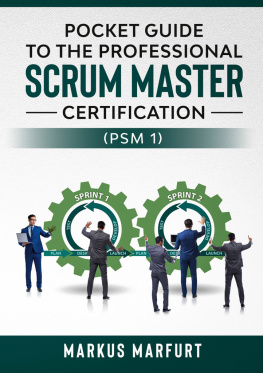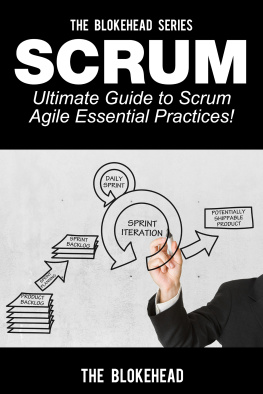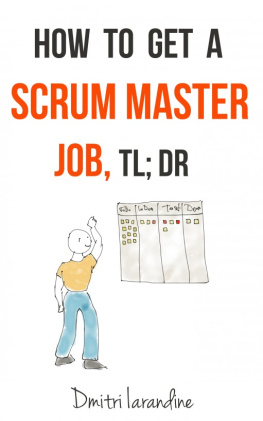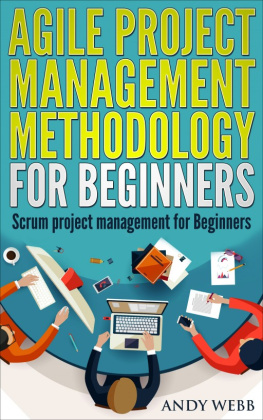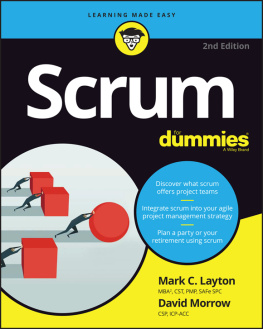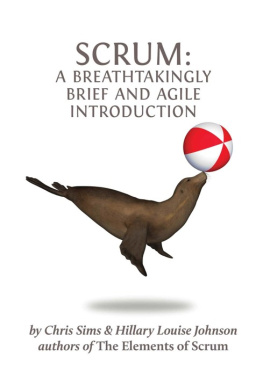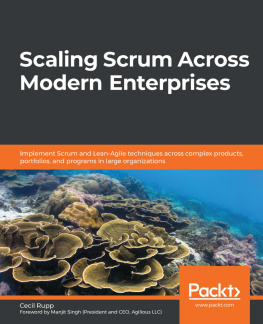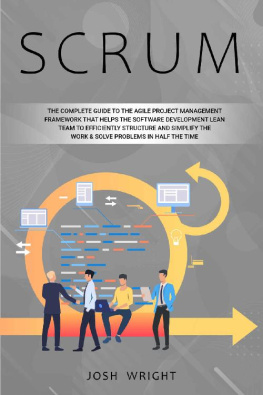
Cover image: logorilla/iStockphoto
Cover design: Michael J. Freeland
Copyright 2013 by Peter Saddington. All rights reserved.
Published by John Wiley & Sons, Inc., Hoboken, New Jersey.
Published simultaneously in Canada.
No part of this publication may be reproduced, stored in a retrieval system, or transmitted in any form or by any means, electronic, mechanical, photocopying, recording, scanning, or otherwise, except as permitted under Section 107 or 108 of the 1976 United States Copyright Act, without either the prior written permission of the Publisher, or authorization through payment of the appropriate per-copy fee to the Copyright Clearance Center, Inc., 222 Rosewood Drive, Danvers, MA 01923, (978) 750-8400, fax (978) 646-8600, or on the web at www.copyright.com. Requests to the Publisher for permission should be addressed to the Permissions Department, John Wiley & Sons, Inc., 111 River Street, Hoboken, NJ 07030, (201) 748-6011, fax (201) 748-6008, or online at http://www.wiley.com/go/permissions.
Limit of Liability/Disclaimer of Warranty: While the publisher and author have used their best efforts in preparing this book, they make no representations or warranties with respect to the accuracy or completeness of the contents of this book and specifically disclaim any implied warranties of merchantability or fitness for a particular purpose. No warranty may be created or extended by sales representatives or written sales materials. The advice and strategies contained herein may not be suitable for your situation. You should consult with a professional where appropriate. Neither the publisher nor author shall be liable for any loss of profit or any other commercial damages, including but not limited to special, incidental, consequential, or other damages.
For general information on our other products and services or for technical support, please contact our Customer Care Department within the United States at (800) 762-2974, outside the United States at (317) 572-3993 or fax (317) 572-4002.
Wiley publishes in a variety of print and electronic formats and by print-on-demand. Some material included with standard print versions of this book may not be included in e-books or in print-on-demand. If this book refers to media such as a CD or DVD that is not included in the version you purchased, you may download this material at http://booksupport.wiley.com. For more information about Wiley products, visit www.wiley.com.
Library of Congress Cataloging-in-Publication Data:
Saddington, Peter, 1982
The Agile pocket guide : a quick start to making your business agile using Scrum and beyond / Peter Saddington.
p. cm.
Includes index.
ISBN 978-1-118-43825-1 (pbk.) ISBN 978-1-118-46179-2 (ebk);
ISBN 978-1-118-46179-2 (ebk); ISBN 978-1-118-46177-8 (ebk)
1. Agile software development. 2. Software engineering. 3. New products.
4. Production management. 5. Teams in the workplace. 6. Workflow. I. Title.
QA76.76.D47S22 2013
005.1dc23
2012030655
About the Author
Peter Saddington is an experienced Business Transformation and Organizational Coach with Action & Influence, Inc., a research and analytics company that focuses on human dynamics and culture in enterprises. In his work as a software development consultant for 15 years, he supported enterprises such as ING DIRECT, Capital One, T-Mobile, Cisco, Yahoo!, J.Crew, InterContinental Hotels Group, Cbeyond, Primedia, the Centers for Disease Control and Prevention, the Department of Defense, the United States Air Force, Blue Cross Blue Shield, Motorola, Samsung, and the United Nations.
Peter holds three masters degrees (in counseling, education, and divinity) and is Certified Scrum Trainer (CST). He has trained hundreds of students in better Agile and Scrum software development methods. He is also the author of Scrum Pocket GuideA Quick Start Guide to Agile Software Development, published in 2010.
An avid writer, Peter is the executive editor of the popular AgileScout.com news blog, which reaches thousands of viewers per day all over the world. He also writes about team optimization and human capital on MyAI.org.
Peter resides in Atlanta, Georgia, with his wife, daughter, and son.
Preface
You should write a book.
My boss told me some years ago. At the time I was sending Agile updates to the team every week via e-mail (and I still do this in my consulting and coaching work) about better practices in business transformation, product and software development, and team optimization. These were subjects I knew from experience would help us develop more efficient methods than those we were already using as a team.
But when I began to think about actually writing this book, I was temporarily sidetracked. Was there really a need for yet another book about business transformation and software development, particularly Agile and Scrum software development? (In the 20 years or so since Scrum methodology was first used and called Scrum by Jeff Sutherland and Ken Schwaber, a lot has been written on the subject!)
I've read many books by famous authors out there who help the community create better products, increase value across the enterprise, and grow businesses with start-up mentalities. Eric Ries, Scott Belsky, Geoff Smart and Randy Street, and Seth Godin are some of the more popular authors rising today who write about better product development. In terms of Agile software development, Kent Beck, Alistair Cockburn, Ron Jeffries, and Ken Schwaber have been immensely helpful in my years as a trainer and coach in this fieldfor small and large businesses, nonprofits, and even government agencies.
This guide isn't meant to be part of those great pillars in the Agile and business community; rather, it will offer a unique perspective on what I've personally learned about paving the way to successful Agile cultures within businesses and development teams.
Through my experience of helping transform businesses and helping organizations implement Agile, I've discovered that in the relationship context, a team is more like a Tribe than anything else. It embodies all the positive and negative aspects of a Tribe, and, when encouraged correctly, this Tribe can become not only a high-performance Tribe but also one that can grow in efficiency and influence. It is absolutely crucial that we understand the unique culture and makeup of each Agile Team. I've always said that technology doesn't build great products and software. It's the people that make up a team: how they communicate, collaborate, deal with conflict, and work together successfully that reveals the potential in each individual and unleashes the productivity of teams. You have to know your people. You have to know how to engage and coach correctly and turn each person's potential into value.
Technology doesn't build great products and software, people do.
Peter Saddington
I hope this book helps to clarify and improve the implementation of Agile through organizational change, especially by bringing personal involvement and ownership into the equation. My time will have been well spent if my reflections provide encouragement to any organization willing to embrace best practices in Agile product and software development, and if they can also shed light on the importance of culture within the team. While my personal touch and experience are apparent throughout the book, I do not depict every single applicable theory of Agile; that said, I do cover the main foundational elements of the Scrum framework. I've taken the liberty to format certain aspects of Scrum to best suit general situations. Some will agree; some will disagree. I welcome all feedback and please do e-mail me!
Next page

